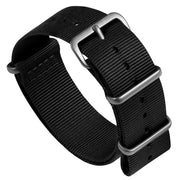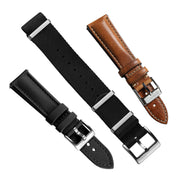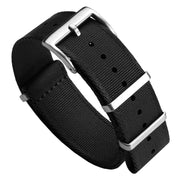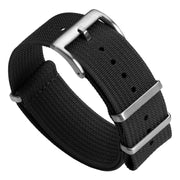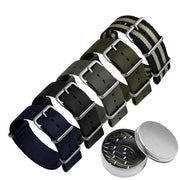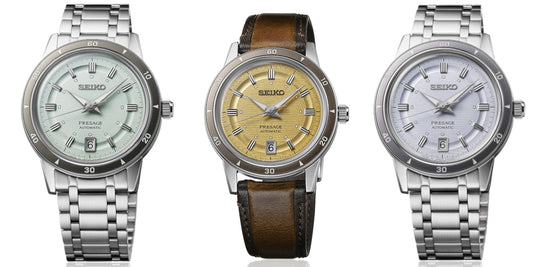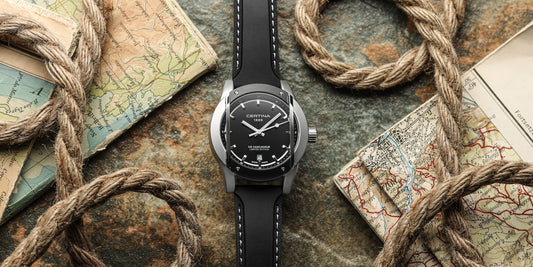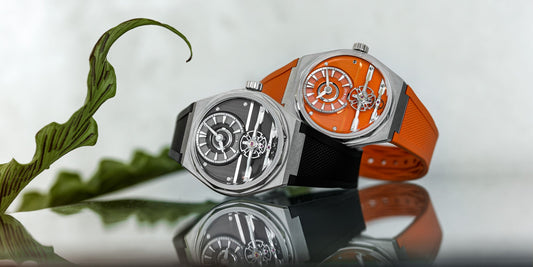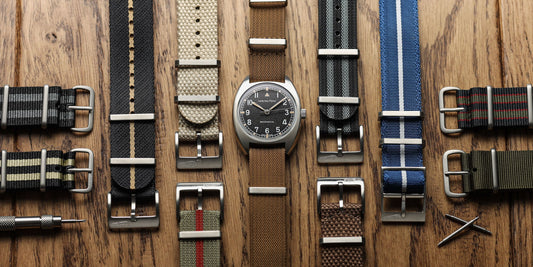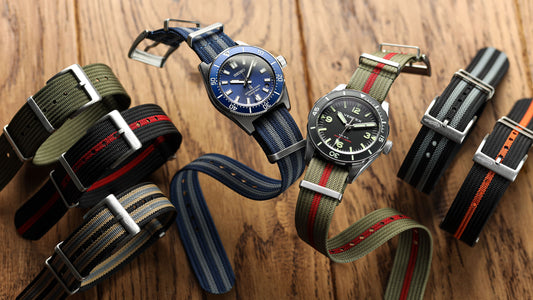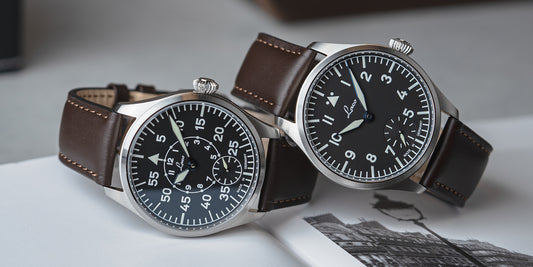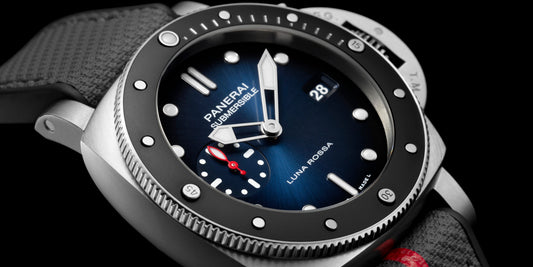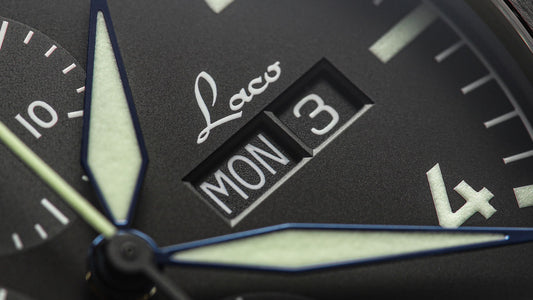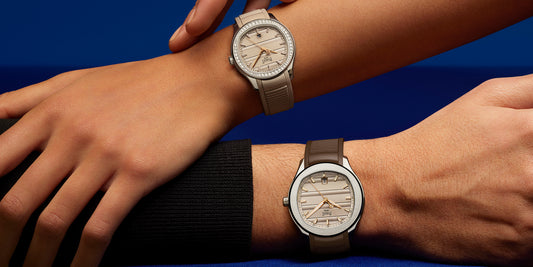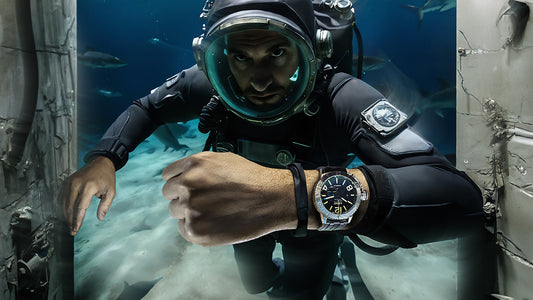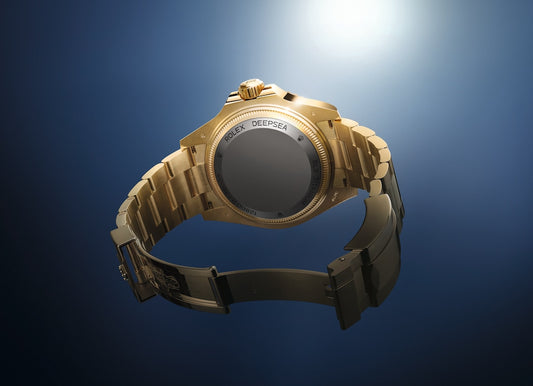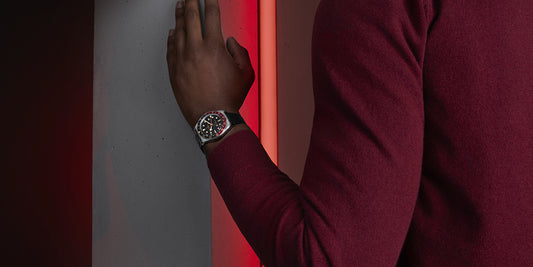How to use a watch as a compass – with the help of a Christopher Ward C60 Lympstone
 Christopher Ward Lympstone - Credit WatchGecko
Christopher Ward Lympstone - Credit WatchGecko
I have just downloaded a compass app for my smartphone. It's super accurate, but the only problem is that my smartphone battery lasts 24 hours, so were I stranded in the middle of the Kalahari, it would be of limited use unless I had solar charging.
In my day-pack, I carry a Silva Expedition compass, which is bulletproof and, unlike a smartphone, doesn't rely on batteries. It has never let me down during global travels. So, why would you use a watch as a compass is a fair question when superior navigation methods are available.
Answer: you use your watch as a compass because you enjoy the philosophy and skill of navigation, and whilst you might have an outstanding app on your phone, using your watch is a great skill to learn and a lot of fun for all ages. And there is always the remote chance that you may find yourselves lost, without a phone or a compass (I have been there), where you'll be glad you learned how to use your analogue watch to find North.
For such an adventure, you need a rugged watch, and my choice of late has been the Christopher Ward C60 Lympstone, designed in cooperation with the UK Royal Marines. More about the watch later.
Grounded to Earth.
 Christopher Ward Lympstone - Credit Staff Writer
Christopher Ward Lympstone - Credit Staff Writer
Before we lose ourselves in survival fantasies, let's clear up a key fact. Unless you have a digital compass on your watch, for example the Casio SGW-100, you cannot instantly head off at a precise bearing of 127 degrees using only a simple analogue watch. What we are looking to do is far more fundamental – find North! From this simple task, we can then extrapolate additional directional data. The first thing I need to stress is that for any of these methods to work, your watch must be set on local time and not compensated for DST.
If you are in the Northern Hemisphere.
First, hold the watch flat, either in your hands or on your wrist. Point the hour hand toward the Sun, then bisect the angle between the hour hand and the 12 o'clock marker. This point will indicate South. If you have a watch with a rotating dive bezel, there is usually a triangle or lume pip at the 12 o'clock position, so use these to mark the bisected angle. It's an excellent visual aid. The opposite side of your dive bezel, generally a 30 or 6, will be pointing North.
 Christopher Ward Lympstone - Credit WatchGecko
Christopher Ward Lympstone - Credit WatchGecko
If you are in the Southern Hemisphere.
The process is very similar but with a critical difference. Point the 12 o'clock marker on the dial toward the Sun, then bisect the angle between the 12 o'clock marker and the hour hand. This point will indicate North. The change in method is due to the Sun rotating counter-clockwise instead of clockwise. Again, you can use the bezel to help see where South, East and West are visually.
If you need a more precise bearing than the four cardinal points, remember your dive bezel is normally divided into 12 equal segments. If you take 360 degrees and divide by 12, you get 30. Therefore, each segment on the dive bezel represents an angle of 30 degrees. If you had to set off from your current position at a bearing of 150 degrees, you could use a dive bezel to roughly calculate that direction.
If you have a 24-hour or GMT hand.
 Christopher Ward Lympstone - Credit Staff Writer
Christopher Ward Lympstone - Credit Staff Writer
24-hour or GMT hands are not only useful for showing an alternate time zone. They can also be used as an accurate compass. These hands take 24 hours to go around the watch face, just like a sundial, and this is how we have been determining time and direction for hundreds of years.
If you are in the Northern Hemisphere, point the GMT or 24-hour hand at the Sun. The 24 mark on your GMT bezel is now facing North. It's as simple as that. If you're in the Southern Hemisphere, point the 24 mark on your GMT bezel towards the Sun, and the 24-hour hand will face North. This method also works if you have a small 24-hour sub-dial; it's just not as easy to read, but neither will work if your 24-hour hand is set to an alternate time zone.
If you have a compass bezel – like we see on the CW C60.
If you have a 360-degree compass bezel on your watch as well as a dive or 24-hour bezel, this doesn't make the watch function like a compass, but it does make directional finding easier. One of the best examples of this function is the Christopher Ward C60 Lympstone. Luckily, WatchGecko had one of these models to test while I was crafting this article, so it seemed like the perfect platform to test the theories.
 Christopher Ward Lympstone - Credit WatchGecko
Christopher Ward Lympstone - Credit WatchGecko
Never get lost with a C60.
The C60 Lympstone is one of Christopher Ward's authentic military watches. It was designed in cooperation with the British Royal Marines, one of the UK's elite Naval combat units.
The watch looks militaristic, perhaps more so than any other Christopher Ward, because it is all black, functional and comes on a black fabric strap. I'd go as far as to say it's the best-looking Christopher Ward in the entire portfolio. For those unfamiliar with the origin of the name, Lympstone is the location of the Royal Marines training centre in Devon.
The finest stainless steel and carbon have been used to create this watch, making it a fitting tribute to an elite unit. The star of the watch is undoubtedly the dial, produced from ultra-tough and light forged carbon. This material gives the dial a swirling marbled texture, and every model is unique. The case and ceramic bezel are coated for protection against hostile environments in a colour Christopher Ward calls gunmetal (which sounds very appropriate). Super Luminova X1 has been deployed on the dial and bezel; therefore, poor light legibility is exceptional.
 Christopher Ward Lympstone - Credit WatchGecko
Christopher Ward Lympstone - Credit WatchGecko
Beating at the heart of the Lympstone is a Selitta COSC-certified SW-200. You cannot see it as the case back is solid with a beautiful design showing the Royal Marines Insignia. This can only be used once the Ministry of Defence has approved a product for Royal Marines use.
Even without the extremely useful compass bezel, this would be a beautiful, striking watch; very mechanical looking for a Christopher Ward and quite unlike some of their other designs. The hands are purposeful, with the trademark arrowhead hour hand and a bright orange seconds hand. The only other sacrifice to colour on my watch was small dial text in orange informing that the watch had been built to withstand a crushing 600 meters or 2000 feet of water resistance.
The watch has two crowns; the lower crown adjusts the time the conventional way and is screwed down. The second crown, once unscrewed, adjusts the internal bidirectional compass.
 Christopher Ward Lympstone - Credit Staff Writer
Christopher Ward Lympstone - Credit Staff Writer
If we go back to the core subject of this feature, then this compass bezel is a handy function because once we have used the hour hand of the C60 to ascertain which way is North, we can rotate the compass so the N for North is pointing in the right direction. The bezel is printed in 10-degree increments, allowing accurate direction-taking once you've located True North.
Priced at £945, this watch represents excellent value for money. I cannot think of another watch that presents such unique design characteristics and ultra-rugged militaristic looks with top-end specs for the same money. For sure, this design will appeal to a limited demographic of buyers, but if you are in that bracket (like me), you're going to love the Christoper Ward C60 Lympstone.
So there you have WatchGecko's simple guide on using an analogue watch as a compass and a brief review of the perfect watch for the job. The best way to get the hang of this technique is to go out and practice. Once you get the hang of it, it's straightforward, and you'll be surprised how accurate a watch can be. Finally, thanks to Don for his help in creating this feature.
 Christopher Ward Lympstone - Credit Staff Writer
Christopher Ward Lympstone - Credit Staff Writer
CW C60 Lympstone Technical Specifications
- Brand: Christopher Ward
- Model: C60 Lympstone Royal Marines Approved
- Price: £945
- Material: Coated stainless steel and ceramic
- Movement: Sw200-1 automatic winding
- Complications: Hours, minutes, seconds, Compass bearings
- Dial: Unique black design made from forged carbon, with Super Luminova X1
- Size: 42mm Diameter, Height 13.8mm, Lug-to-Lug 49.3mm
- When the reviewer would personally wear it: This is a really smart watch which could be worn at any time, but it would have been nice to have it when my Land Rover was running out of fuel in the Omani desert
- A friend we'd recommend it to first: This is a perfect watch for a military or outdoor fan. It feels much higher-end than the price suggests, so it could be a beautiful present. If you are a serious hiker or explorer, then equally this could be the watch for you.
- Best characteristics of the watch: The compass is excellent but the unique carbon dial is stunning.
- The worst characteristics of the watch: The two crowns can seem awkward and negate some of the accepted and conventional symmetry of a watch.



